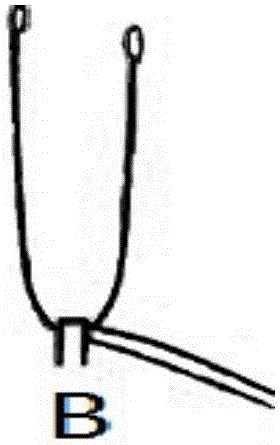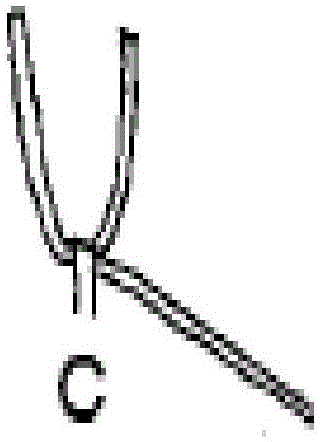Cut rose tree shape cultivation method
A cultivation method and rose technology, applied in botany equipment and methods, cultivation, plant cultivation, etc., can solve the problems of weakened tree vigor, disordered tree type, low quality, etc., and achieve increased yield and quantity, orderly growth, The effect of tree vigor enhancement
- Summary
- Abstract
- Description
- Claims
- Application Information
AI Technical Summary
Problems solved by technology
Method used
Image
Examples
Embodiment 1
[0029] (1) When the plant grows to 45cm, select an elongated branch with vigorous growth and pick the heart at the bottom 2 nodes with 5 small leaves, cultivate the mother branch of cut flowers, and then leave 2 branches to bloom to form the first-level branch ,Such as figure 1 shown.
[0030] (2) When the plant grows to 80cm, at this time, when picking flowers, cut at the bottom 2 joints and 5 leaflets of the branch, and then leave 2 strong branches to make it bloom, forming second-level branches, such as Figure 2a , 2b shown.
[0031] (3) When the plant grows to 120cm, cut the 2 joints and 5 leaflets at the bottom of the branch when picking flowers, and leave 2 strong branches to make them bloom and form third-level branches, such as Figure 3a , 3b shown.
[0032] (4) When the plant grows to 180cm, when picking flowers, cut at the bottom 2 nodes and 5 leaflets of the branch, leave 2 strong branches to make them bloom, and form the fourth-level branches, such as Figu...
Embodiment 2
[0036] The cut rose plants of the same batch as above were taken, and were pruned according to the conventional pruning method, and a comparative experiment was designed.
Embodiment 3
[0038] (1) When the plant grows to 40cm, select an elongated branch with vigorous growth and pick the heart at the bottom 3 nodes and 7 small leaves, cultivate the mother branch of cut flowers, and then leave 2 branches to bloom to form the first-level branch .
[0039] (2) When the plant grows to 100cm, at this time, when picking flowers, cut at the bottom 3 nodes and 7 leaflets of the branch, and then leave 2 strong branches to make it bloom and form the second-order branch.
[0040] (3) When the plant grows to 140cm, cut the 7 leaflets at the bottom 3 nodes of the branch when picking flowers, leave 2 strong branches to make them bloom, and form the third-level branches.
[0041] (4) When the plant grows to 160cm, cut at the bottom 3 nodes and 7 leaflets of the branch when picking flowers, leave 2 strong branches to make them bloom, and form the fourth-level branches.
[0042] (5) When the plant grows to 220cm, cut the 7 leaflets at the bottom 3 nodes of the branch when pic...
PUM
 Login to View More
Login to View More Abstract
Description
Claims
Application Information
 Login to View More
Login to View More - R&D
- Intellectual Property
- Life Sciences
- Materials
- Tech Scout
- Unparalleled Data Quality
- Higher Quality Content
- 60% Fewer Hallucinations
Browse by: Latest US Patents, China's latest patents, Technical Efficacy Thesaurus, Application Domain, Technology Topic, Popular Technical Reports.
© 2025 PatSnap. All rights reserved.Legal|Privacy policy|Modern Slavery Act Transparency Statement|Sitemap|About US| Contact US: help@patsnap.com



